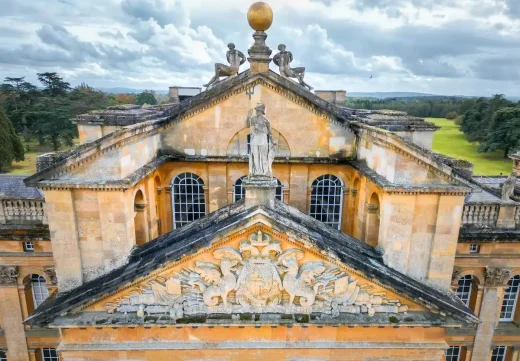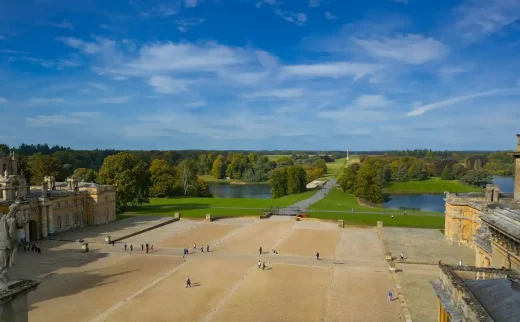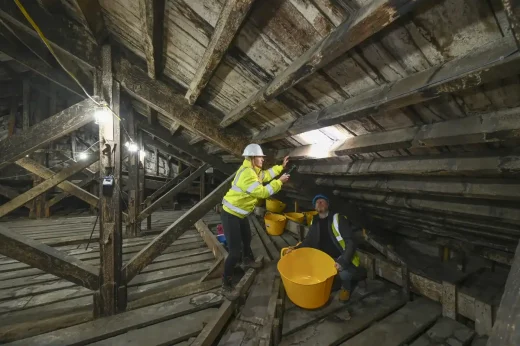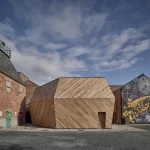Blenheim Palace building restoration, Oxfordshire mansion refurishment, Famous Southern England property
Blenheim Palace building restoration
28 October 2024
Oxfordshire award winning attraction, Blenheim Palace of its biggest restoration project to date – the repair of the roof of the UNESCO World Heritage Site.
Original Architects: John Vanbrugh, Nicholas Hawksmoor
Location: Blenheim Palace, Woodstock OX20 1PS, Oxfordshire, Southern England, United Kingdom
Blenheim Palace raises the roof with groundbreaking £10.4M restoration project
Blenheim Palace building restoration, Oxfordshire, Southern England
Blenheim Palace, one of Britain’s most iconic landmarks, has unveiled its most ambitious restoration project to date, the major repair of the roof of the UNESCO World Heritage Site.
This monumental £10.4 million undertaking aims to preserve Britain’s Greatest Palace’s historic architecture and safeguard its heritage for future generations. Alongside the works commencing in January 2025, Blenheim Palace is introducing unique visitor experiences that provide exclusive access to previously unseen areas of the Estate.
The project will focus on the complete restoration of a substantial section of the Palace roof, enhancing the resilience of the structure against the elements and ensuring its longevity. The works will be carried out by DBR Ltd, specialists in quality historic building conservation to maintain the authenticity of the 18th-century masterpiece.
The roof project is necessary due to water penetration of the roof of the Great Hall, in the Heights (formerly the servants’ quarters) and in the Saloon. Over time water has saturated the timbers below, (which are also infested with Death Watch Beetle) and is causing damage to the priceless ceiling fresco by Sir James Thornhill, which is of international importance. The painting depicts the Duke of Marlborough kneeling to Britannia, proffering a plan of the Battle of Blenheim.
There is also damp, roof leaks, smoke damage, dirt, mould, decay, collapsed ceilings and loss of historic fabric that has caused damage to the priceless Laguerre painting of the Battle of Blenheim that requires urgent conservation.
Outside on the roof, there is considerable stone delamination and stone fall, as well as rusting iron cramps swelling to 12 times their size and breaking stone away, causing health and safety risks and further water penetration. The roof – almost an acre in size is 300% under capacity and is only served by six downpipes; excess rains mean leaks are commonplace, therefore increased rainwater capacity is needed and is part of the restoration too. As Blenheim Palace is over 300 years old, a combination of age, climate change and rainfall water penetration have led to the current state of the roof, attic timbers and ceilings below.
The objectives of the project are to return the roofs to a watertight condition, improve environmental stability of nationally important paintings, reduce health and safety risks and prolong the lifespan of stone by slowing the rate of decay. The restoration work also aims to complete fire compartmentation works, increase the capacity of gutters and improve energy efficiency where possible and practical.
During 2025, the restoration project will also provide a unique perspective over the Estate as well as the surrounding Oxfordshire countryside as part of this initiative. Three exclusive new experiences will also live at the landmark from Spring next year:
Roof Top View
Blenheim Palace is set to raise its roof with an all-new ticketed viewing platform experience providing visitors with never seen before breathtaking views over the Estate including the famous Column of Victory as well as the surrounding Oxfordshire countryside; an entirely unique perspective from above the UNESCO World Heritage Site.
Life Below Stairs
For the first time, visitors will get to go below the Palace and step back in history to explore the hidden world of Blenheim Palace’s servants. The new Life Below Stairs experience will provide the opportunity to see the historically significant original palace kitchens where visitors can immerse themselves in the spaces and hear the sounds of the staff working as they prepare for an important royal visit. During the visit, the day-to-day life, stories and experiences of the kitchen staff, butler, household team and the gardens team, all of whom served the Marlborough family and were an incredibly important part of Blenheim Palace’s operations, will be revealed. Life Below Stairs will give the sense of the Blenheim team of the 1890s.
Family Treasures
Unlock never before seen treasures of the private apartments and follow in the footsteps of dukes, duchesses and their illustrious guests. For a deeper insight into the history of Blenheim Palace, the extended State Room Tours will offer a journey through some of the grandest rooms.
Walk the new route through the family Dining Room; the Smoking Room where George Stubbs’ famous portrait of a tigress can be seen and the Duchess’s Sitting Room, where visitors can spot an unusual clock, designed by Benjamin Vulliamy (George III, 1787), which features a Derby biscuit porcelain figure of Andromache mourning over the ashes of Hector at Troy.
Step through the doors into the Drawing Rooms, a route walked by royalty and the most important visitors to the Palace. The final room is the stunning Grand Cabinet, featuring Savonnerie Carpet (c1750) from the famous Parisian carpet manufacturer and the finest collection of family portraits in the Palace. Normally reserved for special family occasions, explore the most opulent room in the Palace and its treasure trove of priceless artifacts.
2025 will also see Blenheim’s renowned gardens undergo a stunning transformation with new features to be explored every season.
Blenheim Palace first opened its doors to the public 75 years ago to raise funds for essential roof conservation work. The project represents the most significant roof restoration in Blenheim Palace’s history. Every penny of visitor funds will contribute directly to this vital conservation effort, ensuring the project’s completion by 2026. In return, visitors will not only be supporting the preservation of this historic landmark but will also have the opportunity to immerse themselves in the rich history.
Kelly Whitton, Head of Built Heritage at Blenheim Palace, said, “This monumental roof project represents one of the most ambitious conservation efforts in Blenheim Palace’s history. This £10.4 million restoration is a complex undertaking that will require a combination of traditional craftsmanship and innovative building techniques to safeguard the structural integrity of our UNESCO World Heritage Site
“By opening up new areas of the Palace to the public and creating opportunities for visitors to see the project in action in a unique way, we aim to highlight the importance of heritage conservation while supporting heritage craftsmanship by the skilled tradespeople and specialists whose work will ensure Blenheim remains standing for years to come.”
More details about the upcoming experiences will be revealed soon.
To find out more about the roof restoration project, visit www.blenheimpalace.com/restoration and for information on the new visitor experiences for 2025, visit www.blenheimpalace.com/whats-on/events/new-for-2025
For more information on the appointed contractors visit, www.dbrlimited.com
About Blenheim Palace
Home to the Dukes of Marlborough since 1705, Blenheim Palace was designated a UNESCO World Heritage Site in 1987. Set in over 2,000 acres of ‘Capability’ Brown landscaped park and gardens, it was designed by Vanbrugh in the Baroque style and is also the birthplace of one of Britain’s most famous leaders, Sir Winston Churchill.
With over 300 years of history to share and one of the most important and extensive collections in Europe, the magnificent stately home has a rich variety of cultural highlights and an extensive programme of special events and exhibitions.
The total Estate expands into a further 10,000 acres outside of the designated UNESCO World Heritage Site and focuses on care for the land through sustainable means, pursuing net zero, the growth of the local economy, the provision of affordable homes, apprenticeship training and supported community groups as part of its ambition to make this part of Oxfordshire a fairer and better place.
About DBR
DBR is a specialist conservation company that deals with the cleaning and repair of historic fabric and the regeneration of historic buildings.
High-quality workmanship, expertise, and a dedicated and sensitive approach to the care of buildings are the foundation of its thriving business. Well known for its exemplary in-house craft trades, DBR is one of the leading conservation specialists in the UK, working on some of the country’s most notable landmarks, including Grade listed buildings, scheduled monuments and World Heritage Sites, as well as parochial churches, country estates and modest memorials.
Every project DBR undertakes is treated with passion and enthusiasm that is unrivalled in its industry, leaving a lasting impression on its clients and the buildings it cares for. In 2022 DBR was awarded a prestigious Royal Warrant, recognising the contractor’s long standing provision of historic building conservation to the Royal Household.
Blenheim Palace building restoration, Oxfordshire, Southern England images / information received 281024
Address: Woodstock OX20 1PS, Southeast England, UK
Oxfordshire Properties
Major Property Designs in Oxfordshire, Southern England – recent architectural selection from e-architect below:
Oxfordshire Manor House
Architects: Mailen Design
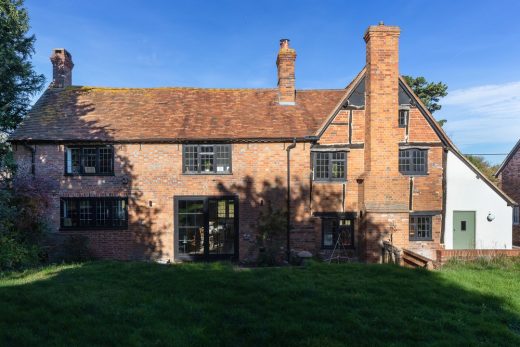
photograph : Peter Landers
Oxfordshire Manor House
Feldon Valley Golf Club
Design: Design Engine Architects
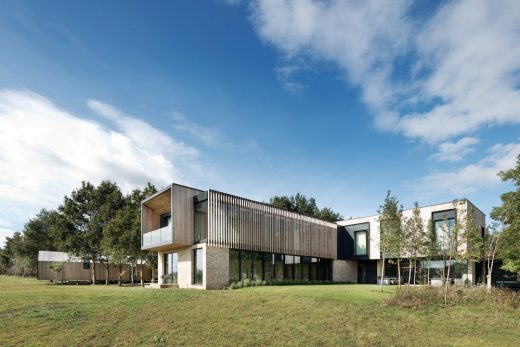
photograph : Martin Gardner
Feldon Valley Golf Club in Oxfordshire
Paddock Barn Guesthouse
Design: Blee Halligan Architects
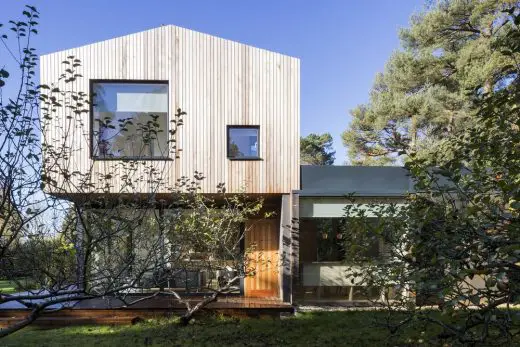
photograph : Sarah Blee
Paddock Barn Guesthouse
Bishop Edward King Chapel, Cuddesdon – Stirling Prize shortlisted in 2013 (didn’t win)
Design: Niall Maclaughlin
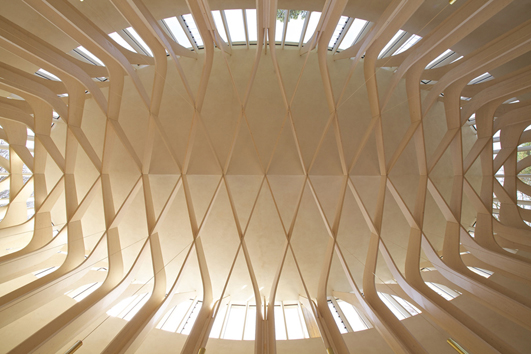
photograph : Balazs Bicsak
Chapel in Oxfordshire
Southeast England Property
Southeast England Home Designs
Glade House
Design: AR Design Studio, Architects
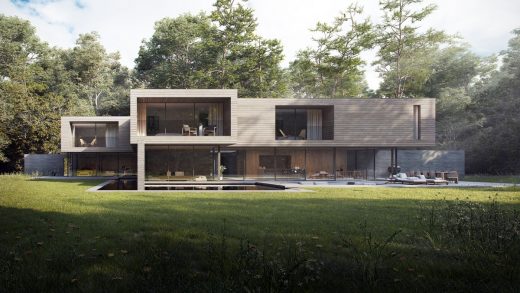
visual : Nu.Ma
Glade House England
UCB Windlesham, Windlesham
Architects: Heatherwick Studio
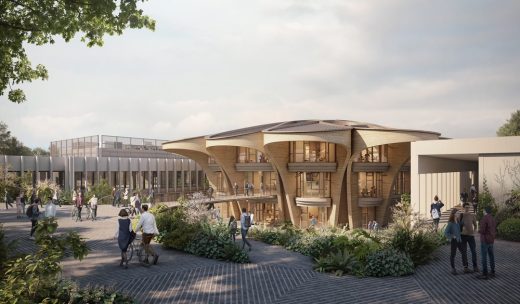
image : Secchi Smith Apple
UCB Windlesham Surrey Science Research Hub
Guildford Crematorium, New Pond Road, Godalming
Design: Haverstock, Architects
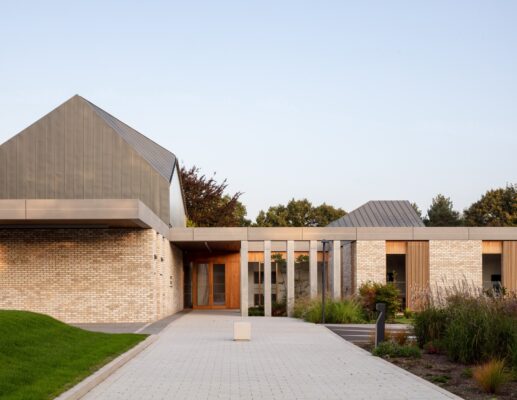
photo : Simon Kennedy
Guildford Crematorium
English Home Designs
English Residential Architecture
English Architecture Designs – chronological list
Comments / photos for the Blenheim Palace building restoration, Oxfordshire, Southern England property page welcome.


